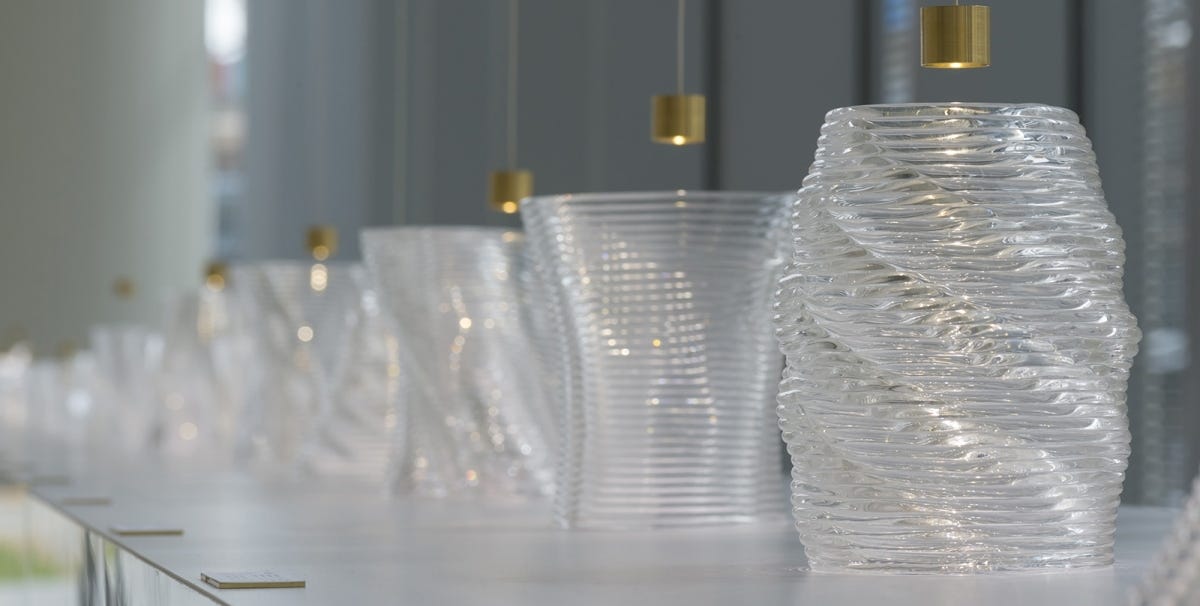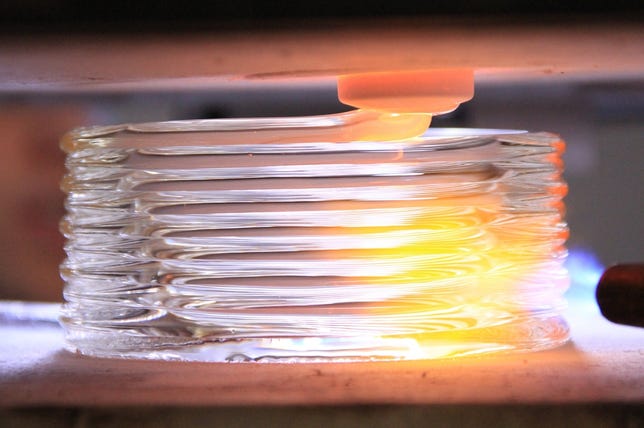 Enlarge Image
Enlarge ImageAndy Ryan/Mediated Matter Group
Once the basics for 3D-printer technology were established with plastic filament, the next step was experimenting with a variety of materials, which sees us pretty much smack-bang where we are now. Metal, ceramics, sandstone, sugar and even living tissue are all materials that have seen their way into 3D printing.
Well, now we can add glass to that list, thanks to a team of researchers at MIT’s Mediated Matter Group, who have developed a 3D printer that is capable of printing glass structures. Their research will appear in the September issue of the journal 3D Printing and Additive Manufacturing, and you can watch a video of the printer in action below.
Glass manufacturing requires precise control of temperature, knowing how heat affects the viscosity of the glass and keeping it at the correct temperature long enough to manipulate it into a shape. The glass then has to be cooled slowly enough that the falling temperature doesn’t cause the material to crack.

 Enlarge Image
Enlarge ImageAndy Ryan/Mediated Matter Group
The printer, which the team has called the G3DP, manages this with two heated chambers. The top chamber is the crucible kiln that melts the glass, operating at a temperature of around 1,040 to 1,165 degrees Celsius (1,900 to 2,130 degrees Fahrenheit), which is at the low end of the temperature zone in which glass is malleable. This makes the glass viscous enough to exit the extruder, but not so soft that it won’t maintain its shape as it’s printed.
First, the glass is melted at a temperature of 1,165 degrees Celsius over a period of about four hours. Then for another two hours, it undergoes a process called fining, in which helium may be introduced to the molten material to enlarge and carry small bubbles to the surface, eliminating them.

 Enlarge Image
Enlarge ImageSteven Keating/Mediated Matter Group
During this process, the extruder has to be kept cool so that the glass doesn’t start flowing. Once fining is complete, the crucible and nozzle are set to temperatures of 1,040 and 1,010 degrees Celsius, respectively, and the print, controlled by three independent stepper motors, can begin.
The bottom chamber is gently heated at around 480 degrees Celsius to let the glass cool at a slow rate, which prevents internal stresses from forming. Once cooled, any sharp edges can be polished smooth, and any waste glass can be flushed out of the printer by heating both crucible and extruder to the higher 1,165-degree-Celsius temperature.
There are still some tweaks to be made to the G3DP system. A better software interface would allow the operator to take direct control of the temperature operations. Using gravity as a feed mechanism resulted in uneven pressure, meaning the flow of molten glass was uneven. The team plans to test an active feed system, such as a plunger, in future iterations of the printer.
Nevertheless, the team has successfully printed an array of different vase-like objects, which will be on display at Cooper Hewitt, Smithsonian Design Museum in 2016.




